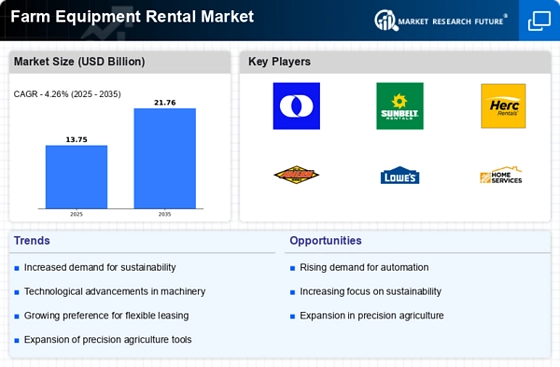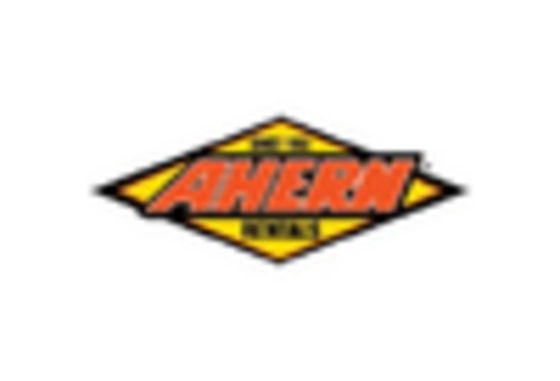The Farm Equipment Rental Market is currently characterized by a dynamic competitive landscape, driven by increasing demand for agricultural efficiency and sustainability. Key players such as United Rentals (US), Sunbelt Rentals (US), and John Deere (US) are strategically positioning themselves through innovation and regional expansion. United Rentals (US) has focused on enhancing its fleet with advanced technology, while Sunbelt Rentals (US) emphasizes customer service and localized offerings. John Deere (US), on the other hand, is leveraging its strong brand reputation to integrate digital solutions into its rental services, thereby shaping a competitive environment that prioritizes technological advancement and customer-centric approaches.
The market structure appears moderately fragmented, with several players vying for market share. Key business tactics include localizing manufacturing and optimizing supply chains to enhance service delivery. This fragmentation allows for a diverse range of offerings, yet the collective influence of major players like Caterpillar (US) and Home Depot (US) is significant, as they set benchmarks for service quality and technological integration.
In August 2025, United Rentals (US) announced a partnership with a leading agricultural technology firm to develop a new line of precision farming equipment for rental. This strategic move is likely to enhance their service portfolio, allowing them to cater to the growing demand for precision agriculture solutions. By integrating advanced technology into their offerings, United Rentals (US) positions itself as a forward-thinking leader in the market, potentially attracting a new customer base focused on efficiency and sustainability.
In September 2025, Sunbelt Rentals (US) expanded its operations into the Midwest, opening several new locations to better serve the agricultural sector. This expansion reflects a strategic focus on regional growth and customer accessibility, which may enhance their competitive edge in a market that increasingly values localized service. By establishing a stronger presence in key agricultural regions, Sunbelt Rentals (US) could capitalize on the rising demand for rental equipment among farmers seeking flexible solutions.
In July 2025, John Deere (US) launched a new digital platform aimed at streamlining the rental process for customers. This platform integrates AI-driven analytics to optimize equipment usage and maintenance schedules. The introduction of such technology not only enhances customer experience but also positions John Deere (US) as a pioneer in digital transformation within the rental market. This strategic initiative may lead to increased customer loyalty and a stronger market position as the industry shifts towards more tech-driven solutions.
As of October 2025, the competitive trends in the Farm Equipment Rental Market are increasingly defined by digitalization, sustainability, and the integration of artificial intelligence. Strategic alliances among key players are shaping the landscape, fostering innovation and enhancing service offerings. The shift from price-based competition to a focus on technological advancement and supply chain reliability is evident, suggesting that future competitive differentiation will hinge on the ability to innovate and adapt to evolving market demands.

















Leave a Comment